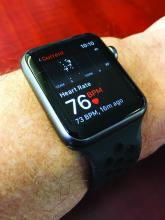News
Heart Attack, Stroke Survivors at High Risk for Long COVID
- Author:
- Tinker Ready
Researchers suggest that anyone with cardiovascular disease should consider getting the updated COVID vaccine boosters.
News
Cold or Flu Virus May Trigger Relapse of Long COVID
- Author:
- Tinker Ready
Viral persistence may be behind cases of patients who had recurrence of long COVID after cold, flu, and COVID reinfection.
News
New Data: Long COVID Cases Surge
- Author:
- Tinker Ready
February long COVID-19 cases continued to rise, likely because of less masking and a higher number of infections at the end of 2023.
News
Study IDs Immune Abnormality Possibly Causing Long COVID
- Author:
- Tinker Ready
Research found that the part of the body’s immune response called the “complement system” is not working properly in patients with long COVID.
News
Why Are Women More Likely to Get Long COVID?
- Author:
- Tinker Ready
Almost twice as many women contract long COVID, compared with men, according to the CDC.
News
Second infection hikes long COVID risk: Expert Q&A
- Author:
- Tinker Ready
There are people who think, “This is a nothing-burger anymore,” or “It’s not an issue anymore.” It’s still happening with the current variants.
News
Children and long COVID: How many are affected?
- Author:
- Tinker Ready
A warning sign of long COVID in children is profound fatigue.
News
Off-label meds: Promising long COVID treatments?
- Author:
- Tinker Ready
Low-dose naltrexone is a major topic of discussion on public long COVID patient groups on Facebook.
News
Long COVID patients turn to doctors for help with disability claims
- Author:
- Tinker Ready
With no definitive blood tests or scans for long COVID that could confirm a diagnosis, some say doctors may feel uncomfortable in this role.
News

Long COVID mobile monitoring study hunts for answers
- Author:
- Tinker Ready
Researchers plan to use mobile monitoring devices in the federally-funded RECOVER Initiative to provide doctors and patients with a wealth of...
News
NPs and PAs performing colonoscopies: Why not?
- Author:
- Tinker Ready
Lowering the age for colonoscopy to 45 years will increase the current pool eligible for screening by 22%. Is there capacity for that without help...
News
Jack Remington, MD, noted toxoplasmosis researcher, dies at 90
- Author:
- Tinker Ready
Dr. Remington developed a blood test that measures a baby’s exposure and, therefore, risk for toxoplasmosis....
